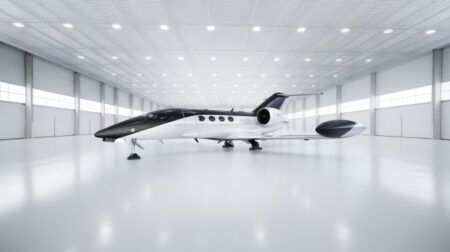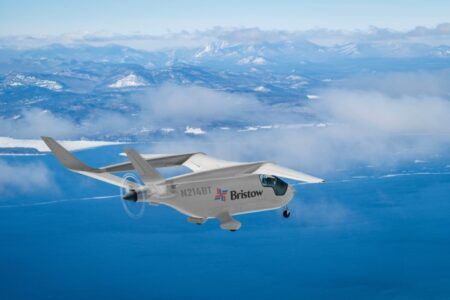Airbus Group’s E-Fan technology demonstrator has become the world’s first all-electric two-engine aircraft taking off by its own power to successfully cross the English Channel, some 106 years after Louis Blériot’s epic flight. The E-Fan’s flight of 74km [46 miles] between Lydd, England, and Calais in France was completed in 36 minutes, on July 10.
The E-Fan is powered by lithium-ion batteries, which offer an increased battery capacity of 60% compared with the aircraft’s original configuration. Flown by test pilot Didier Esteyne, the E-Fan weighs around 600kg [1,320 lb] and traveled at a maximum altitude of about 1,000m [3,500ft].
Louis Blériot was one of the most famous aviation pioneers of his time. He performed the Channel crossing on July 25, 1909 in his Blériot XI, an aircraft that not only became the record–breaking airplane of 1909 and 1910, but also the first aircraft to be put into mass production and launch France’s aviation industry. Blériot’s company was based in Suresnes, near Paris, at the same site that part of the E-Fan team is now located in.
“The E-Fan project and today’s historic Channel crossing show that the pioneering spirit and ingenuity demonstrated by Louis Blériot and the other early aviators is still alive today. July 10, 2015 will now join the list of famous days in aviation history and I’m sure Blériot would be proud of this achievement,” said Jean Botti, Airbus Group chief technical officer. “We continue to embody the spirit of innovation and tackle technical challenges that advance aerospace as we know it today and pioneer the next generation of electric and hybrid flight.”
Another first saw the aircraft equipped with V-Nova Ltd’s Perseus data compression technology that enabled up- and downstream HD (high-definition, 720p 25 frames/sec) video telemetry over standard, publically-accessible 3G mobile networks during the flight, with a more than 80% bandwidth reduction compared to traditional technology under similar conditions.
This made it possible to transmit terrestrial HD video to the cockpit, and allowed personnel aboard the chase aircraft and on the ground to view the E-Fan’s flight progress, as offline content and camera feeds from the crossing were down-linked, encoded and distributed in real time via 3G networks to Android- and iOS-connected devices.
“Streaming HD-quality live video over existing 3G networks under demanding ‘real-life’ aerospace conditions is completely new, and it is very fitting that V-Nova’s innovative PERSEUS technology was part of the E-Fan’s historic flight across the English Channel,” commented Airbus’ Botti. “There are significant opportunities for this technology to support the aerospace industry’s digital transformation.”
V-Nova’s contribution to the E-Fan’s Channel crossing results from its new partnership with Airbus Group – a global leader in aeronautics, space and related services – to explore aerospace applications for PERSEUS, which provides high-quality, high-compression encoding and decoding of data – at significantly faster speeds and the same or lower latency than traditional technology – using commercial-off-the shelf (COTS) hardware.
“The ability to demonstrate up- and downstream HD video telemetry via 3G networks to a moving aircraft under highly dynamic operating conditions is a testament to PERSEUS’ robustness and its broad applicability in multiple industries, including aerospace. We are proud to be exploring these applications together with the Airbus Group and see great potential for the relationship,” said Guido Meardi, V-Nova CEO & Co-Founder.




